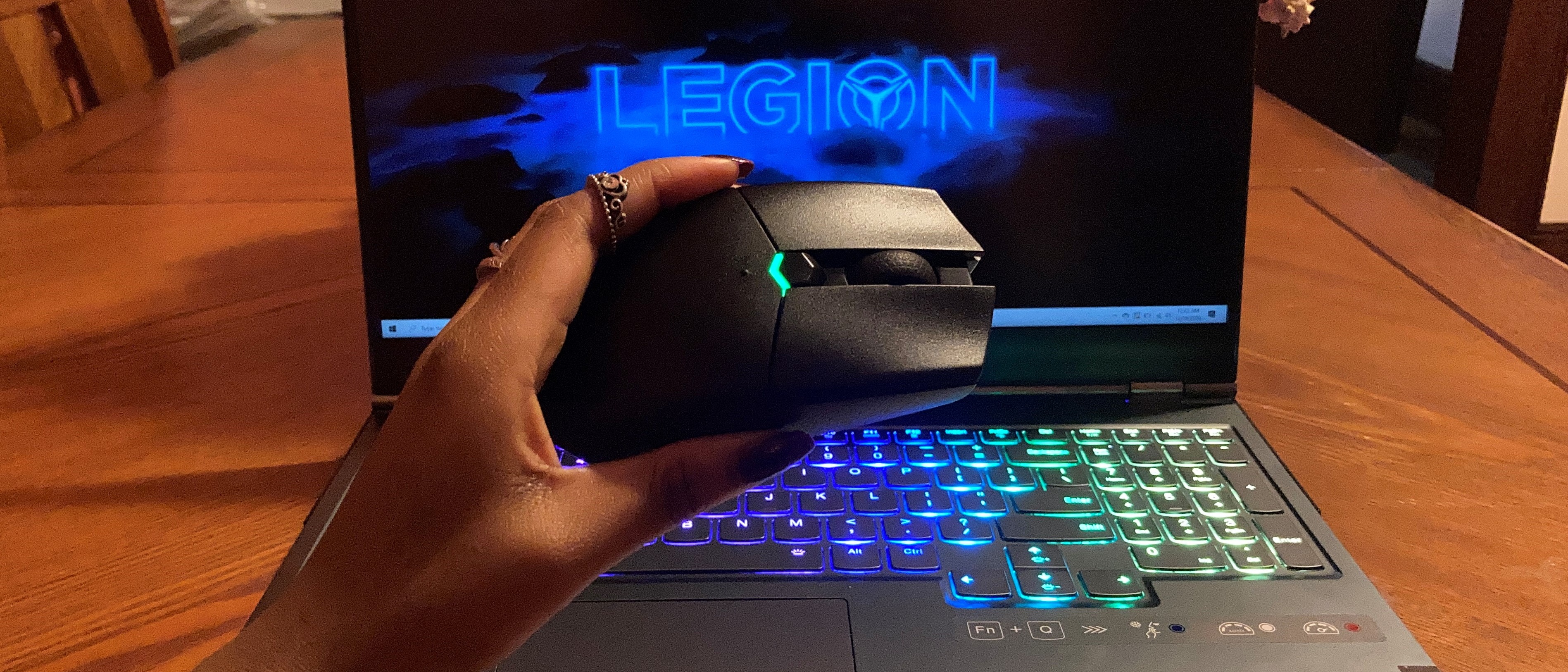Laptop Mag Verdict
The Corsair Katar Pro Wireless Gaming Mouse is a minimalist’s dream with a bare-bones design, but this rodent may be a penny pincher’s nightmare since it requires frequent battery changes.
Pros
- +
Subtle all-black design
- +
Minimal buttons for simplistic usage
- +
Sturdy build quality
- +
Easy switching between USB receiver and Bluetooth
Cons
- -
Lack of thumb and pinky support
- -
Requires battery changes every few weeks
- -
Minor post-travel on clicks
Why you can trust Laptop Mag
The Corsair Katar Pro Wireless is an unextravagant, all-black gaming mouse that can masquerade as an office rodent due to its minimalist, subtle aesthetic. This mouse doesn’t have an overabundance of buttons like other mice on the market. Instead, users can manage DPI configuration, power modes, Bluetooth and more with just two or three simple clicks.
However, the $39.99 Katar Pro Wireless, claiming to offer 135 hours of battery life, may impel you to nab a pricier mouse with a better charging solution or longer endurance. The Corsair mouse, powered by a AA battery, will require you to change its battery every two-to-three weeks, depending on how often you use the Katar Wireless Pro device.
Springy, bouncy clicks are another trade-off you’ll have to make with the Katar Pro Wireless Gaming Mouse — I personally found the buttons to be mushier than I’d like. Still, the Corsair rodent has plenty of upsides, including a tactile scroll wheel, seamless switching between Bluetooth and Slipstream channels, and a multi-purpose LED status indicator that informs you about everything from your mouse’s DPI status to whether it successfully paired with your PC.
Corsair Katar Pro Wireless design
The Katar Pro Wireless mouse has no desire to catch your attention with flashy RGB lighting, razor-sharp angles or conspicuous contours. The Katar Pro Wireless is an all-black device with an understated, minimalist design, but it still features some eye-catching elements that save it from being boring and basic.
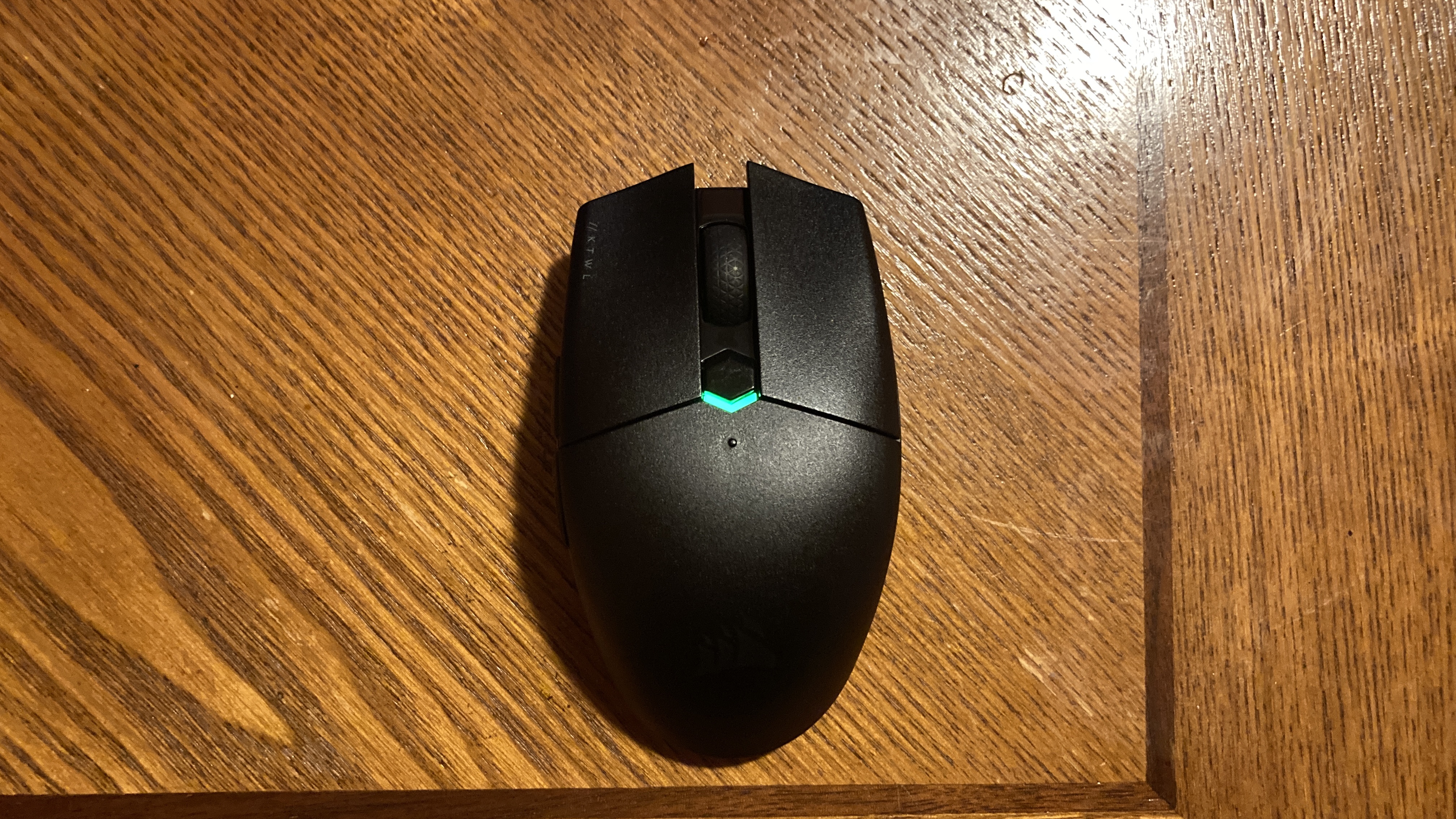
Corsair’s signature, funky left and right buttons always reminded me of the two-finger Martial Arts eye strike. In between the left and right buttons is a rubber scroll wheel with a triangle-tessellation design. This textured design can also be found on the sides of the mouse for better hand gripping. The left side of the mouse houses a pair of chunky shortcut buttons.
The all-plastic Katar Pro Wireless mouse has one hexagonal-style DPI button, also located between the left and right buttons, with a V-shaped LED indicator underneath it. All six buttons are programmable, including the DPI button, the scroll wheel, the left-and-right clickers and the shortcut pair. The bottom of the mouse features two super-smooth PTFE glide pads. You’ll also find the Pixart sensor and a switch to toggle Bluetooth and wireless modes on and off.
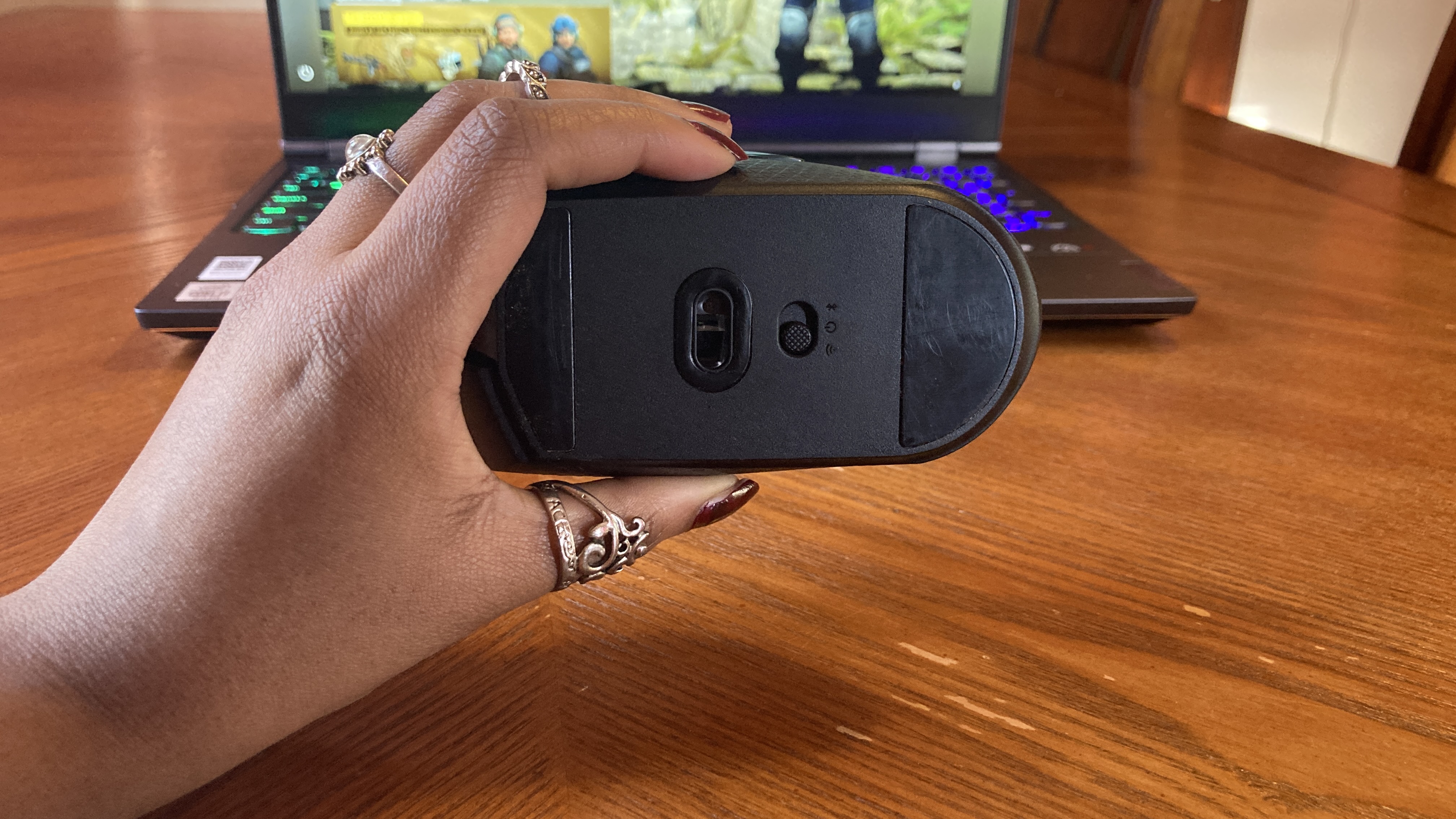
The mouse, sporting dimensions of 4.6 x 2.5 x 1.5 inches and weighing 96 grams (3.4 ounces), has a bit of a weight distribution issue, causing the mouse to teeter upward with the backend of the mouse dropping when you pick it up.
Corsair Katar Pro Wireless comfort
Somebody play Fergie’s “My Humps”! This rodent gives camels a run for their money with its humpier-than-usual palm rest. This flagrant hump may thwart you from “spending all your money” on it. Some mouse users prefer flatter profiles. Personally, I dig a good ol’ humpy palm rest. My palm is curved in its natural resting state, so the humpier, the better.
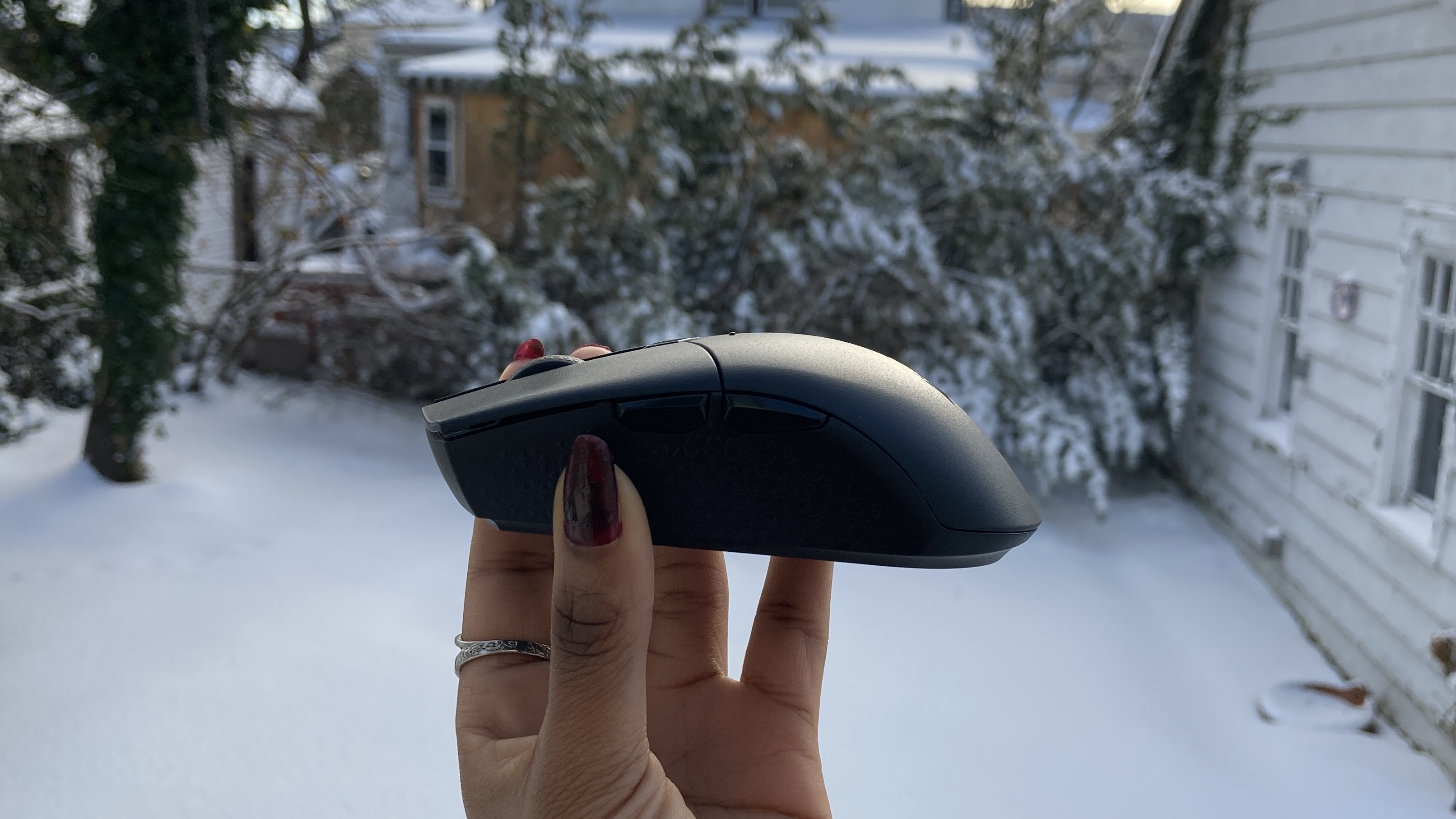
However, I prefer my mice to have inward-curved grooves for a place to rest my thumb and pinky. This mouse, unfortunately, does not sport this feature. My thumb and pinky rest on the table when I use this device, which isn’t a big deal for some, but it’s still worth noting.
Another downside of the Corsair Katar Pro Wireless mouse is that the left and right buttons (and the shortcut pair) feels a tiny bit mushy, giving too much post travel for my taste (post travel is defined as continued movement after point of actuation).
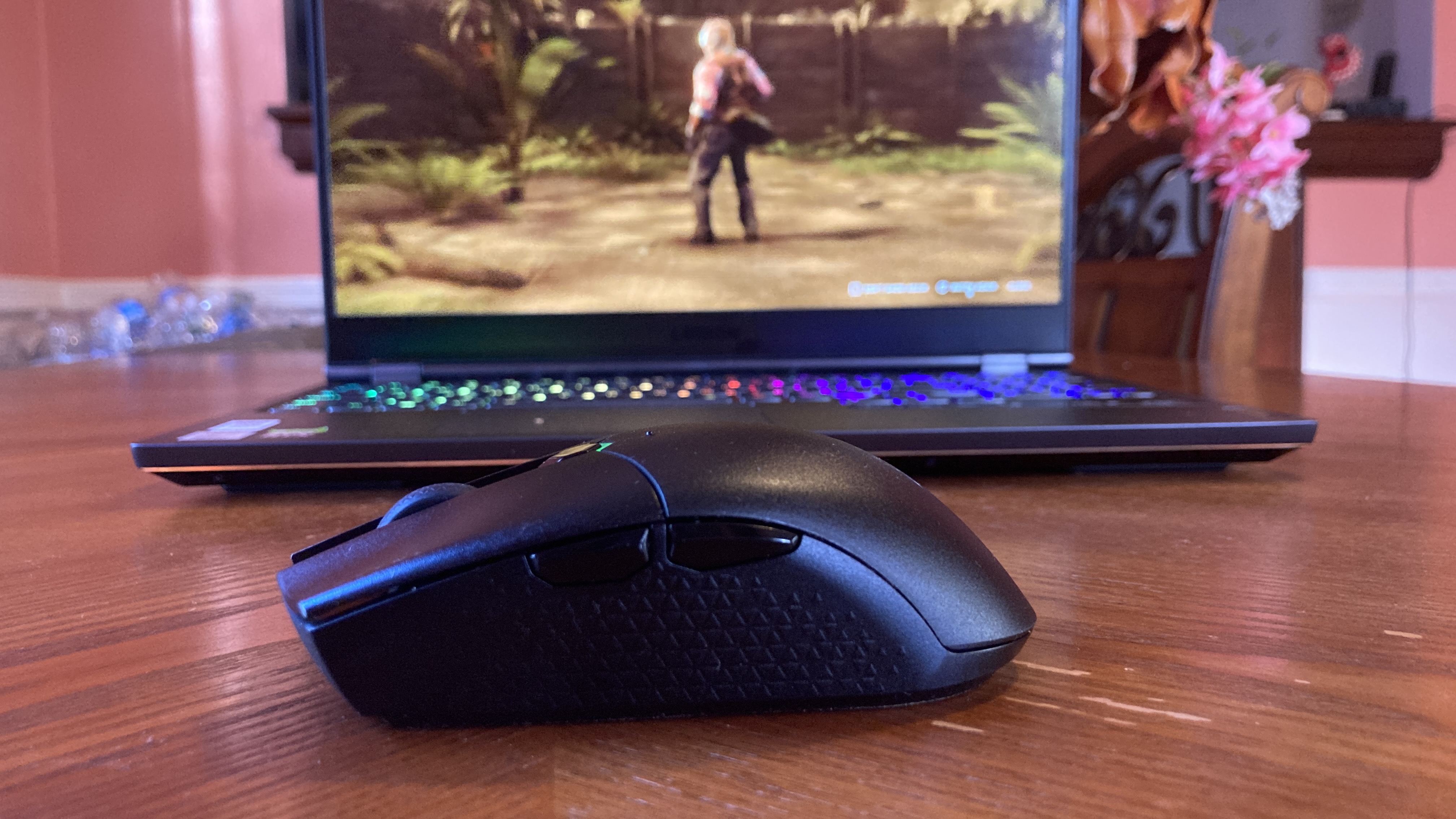
Aside from the non-existent pinky rest and slightly spongy clicks, the Katar Pro Wireless felt comfortable overall as the rodent darted around my table during gameplay.
Corsair Katar Pro Wireless connectivity
The Katar Pro Wireless mouse does not have a wired option. You have two choices: connect via Bluetooth 4.2 or use its 2.4-GHz Slipstream feature via the included USB Type-A dongle. Slipstream offers a sub-1 millisecond latency, making it a better option over Bluetooth, which has a higher latency rate. A bottom button makes it easy for users to switch from Bluetooth to Slipstream and vice versa.

The V-shaped LED indicator will inform you about the pairing process. While pairing via Slipstream or Bluetooth, the LED indicator will blink white and blue, respectively. If the pairing is successful, a stationary white will appear for Slipstream while a stationary blue light will emanate for Bluetooth. If the pairing is unsuccessful for Slipstream or Bluetooth, the LED indicator will show a pulsing white and blue light, respectively.
You’ll also need an AA battery to power up the Katar Pro Wireless mouse, which ships with the device. Corsair claims that the mouse offers 135 hours of continuous use. For me, the mouse lasted about two weeks before it died on me. If you don’t like the idea of needing to input a new battery almost every week, consider purchasing rechargeable batteries or upgrading to a mouse that recharges via USB.
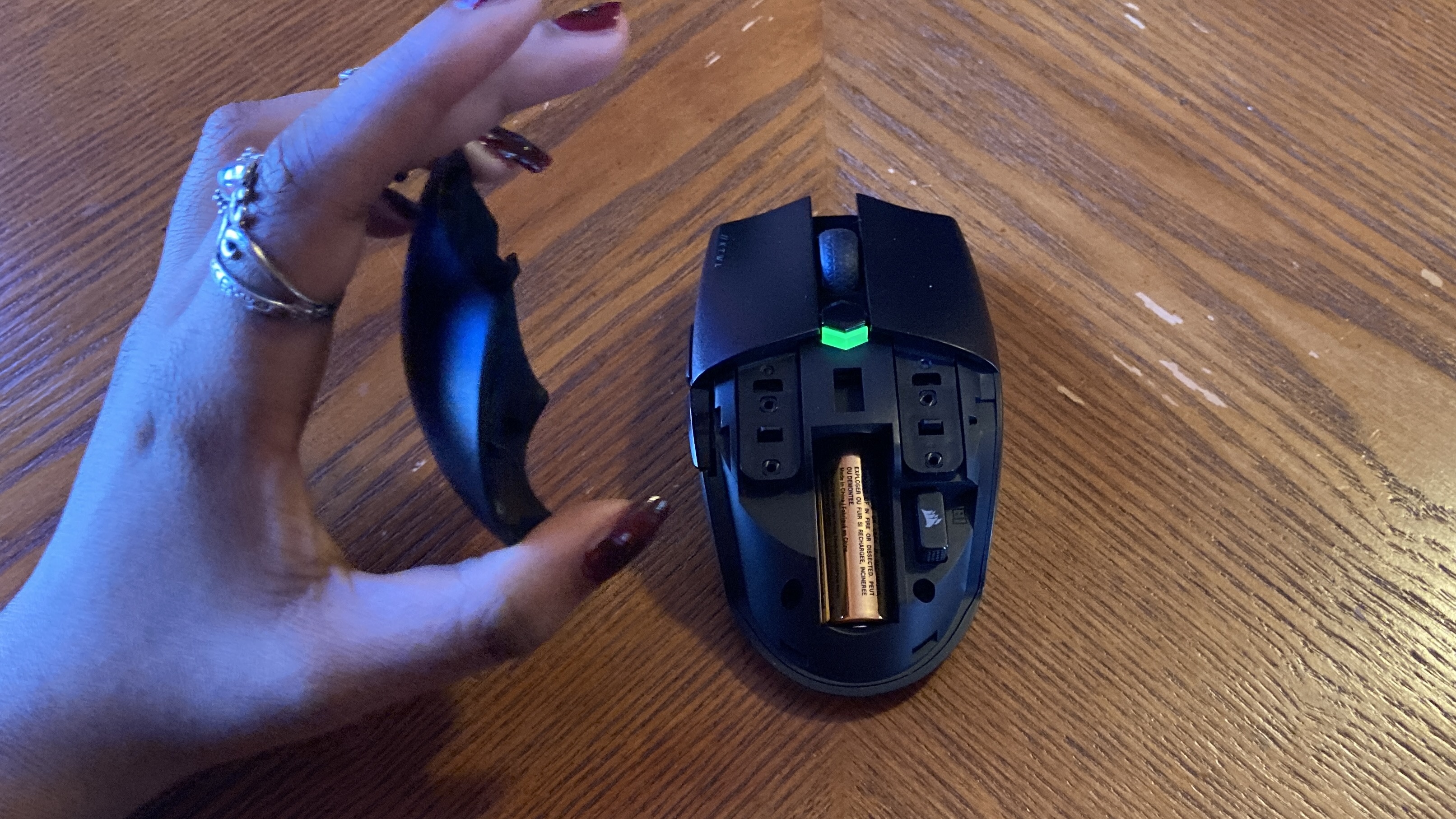
The multi-purpose V-shaped LED indicator will tell you your mouse’s battery status, blinking red for low battery, amber for medium battery and green for full battery.
Corsair Katar Pro Wireless features
The Corsair Katar Pro Wireless mouse isn’t filled with glitzy features, but one of its notable traits is the singular hexagonal button that can toggle between three profiles: 800 DPI, 1,500 DPI and 3,000 DPI.
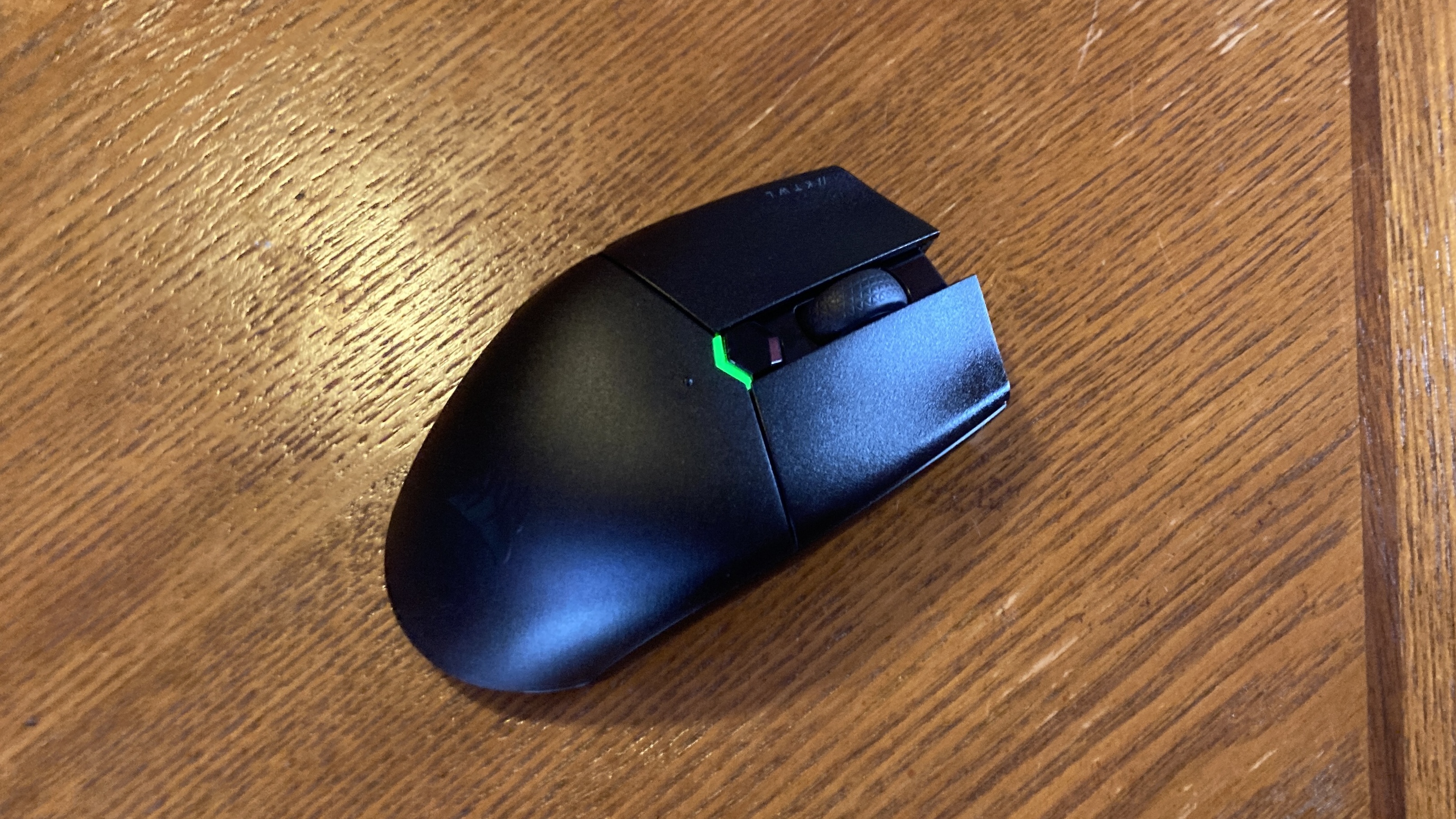
The Katar Pro Wireless mouse also has two power modes: gaming and power-saving. You can switch on the power-saving mode by turning off the mouse, holding the scroll wheel button down, sliding the power switch to Slipstream or Bluetooth, then releasing the scroll wheel. If the LED indicator blinks yellow, you’ve successfully turned on power-saving mode. You can follow the same steps to switch back to gaming mode — the LED indicator will flash purple light if the process is successful.
Gaming mode offers the highest polling rate available with a two-minute, auto-sleep timer. Power-saving mode, on the other hand, offers the minimum polling rate with a 10-second, auto-sleep timer.
You can use Corsair's iCUE software, available for download via the company’s website, to control power management and configure the mouse’s six programmable buttons. You can also make more granular adjustments to the DPI button — other than its three default settings — to change the mouse’s sensitivity to your liking. Other changes you can make on the iCUE software app are personalizing the color of the LED indicator lights, configuring the mouse’s polling rate, changing the sleep timer and much more.
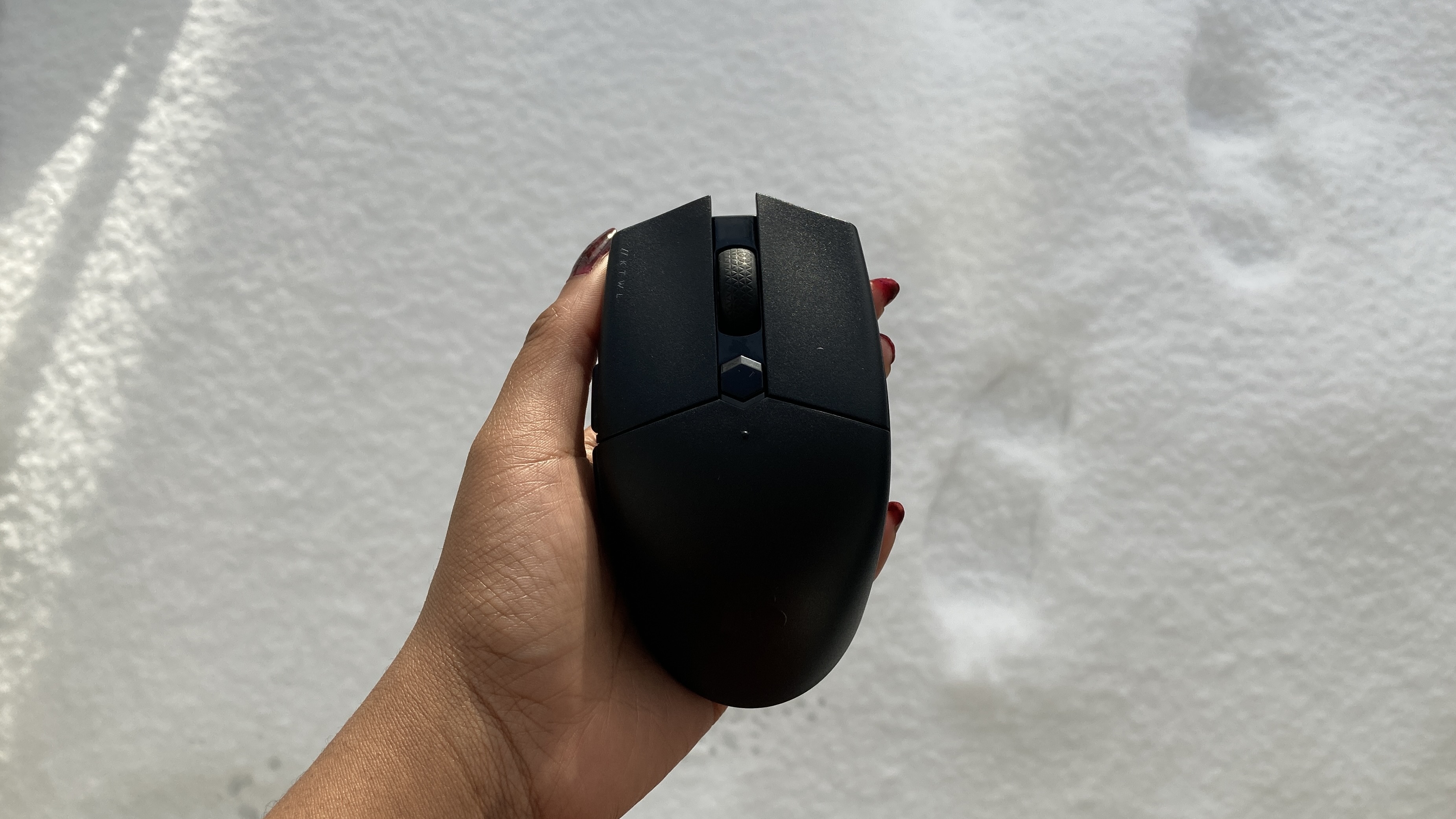
Lastly, the Katar Pro Wireless mouse sports a PixArt PMW3325 optical sensor that tracks movements at up to 10,000 DPI at a 1,000-Hz-per-millisecond polling rate.
Corsair Katar Pro Wireless performance
I enjoyed playing Counter-Strike: Global Offensive with the Katar Pro Wireless mouse. Using the scroll wheel, which has excellent tactile notches, I could seamlessly switch between my three weapons: a grenade, a pistol and an assault rifle.
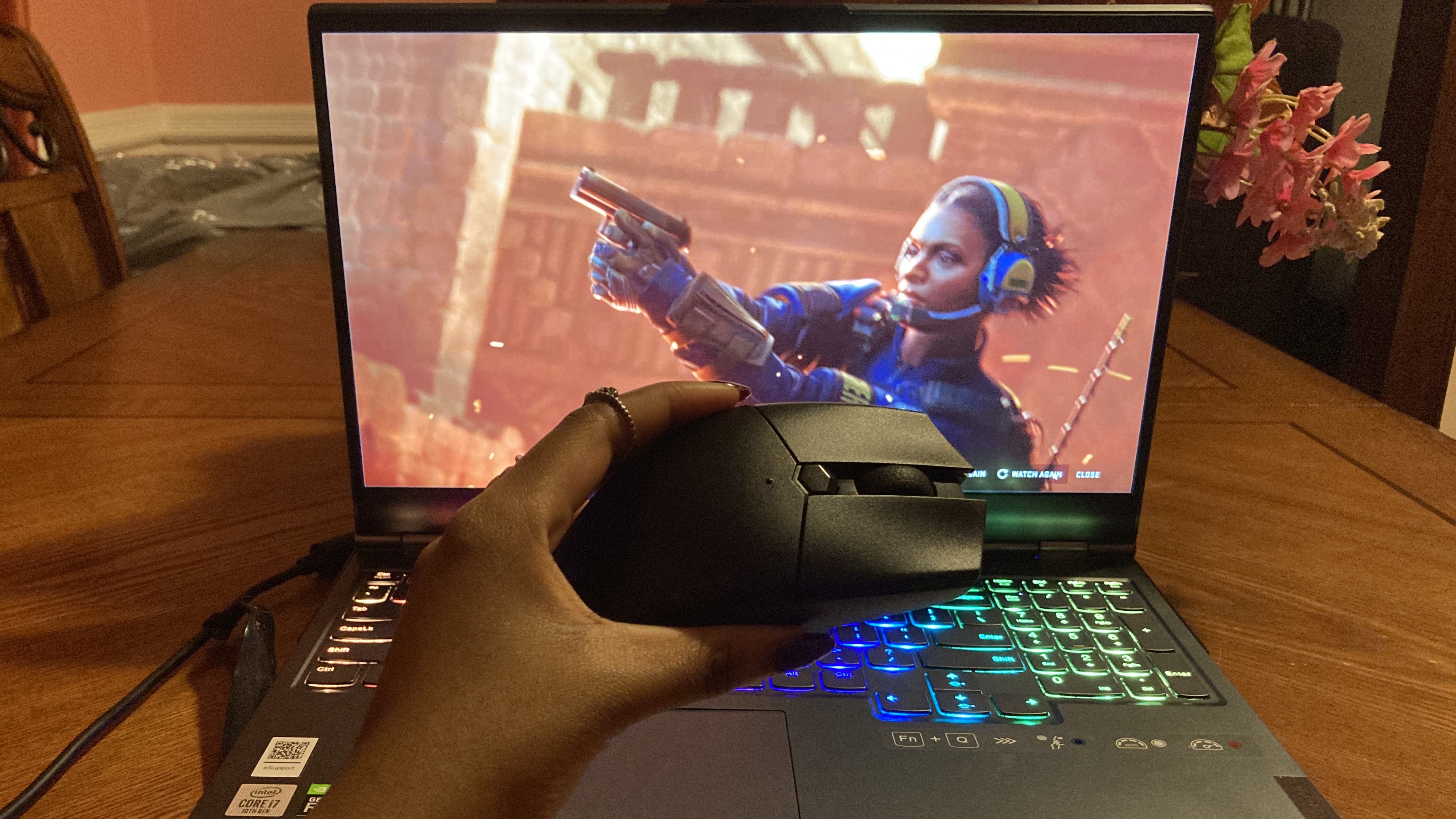
I tested the first tier on the DPI button, which outputs 800 DPI. I found that the sensitivity was too low, requiring me to waste too much time and energy dragging my crosshair to the right target. The second tier on the DPI button offered the sweetest spot at 1,500, giving me the perfect balance of speed and accuracy as I took down bomb-planting terrorists in CS:GO. Running through a training course, I was 20 seconds faster using the 1,500 DPI mode. The 3,000 DPI third-tier was speedy, but perhaps too much so — it decreased my accuracy while trying to take down enemies.
However, as mentioned, I’m not a fan of the post-travel from the left and right-click buttons, which is perceivable while I’m shooting continuously with a firearm. I wish the buttons could spring back faster after landing clicks.
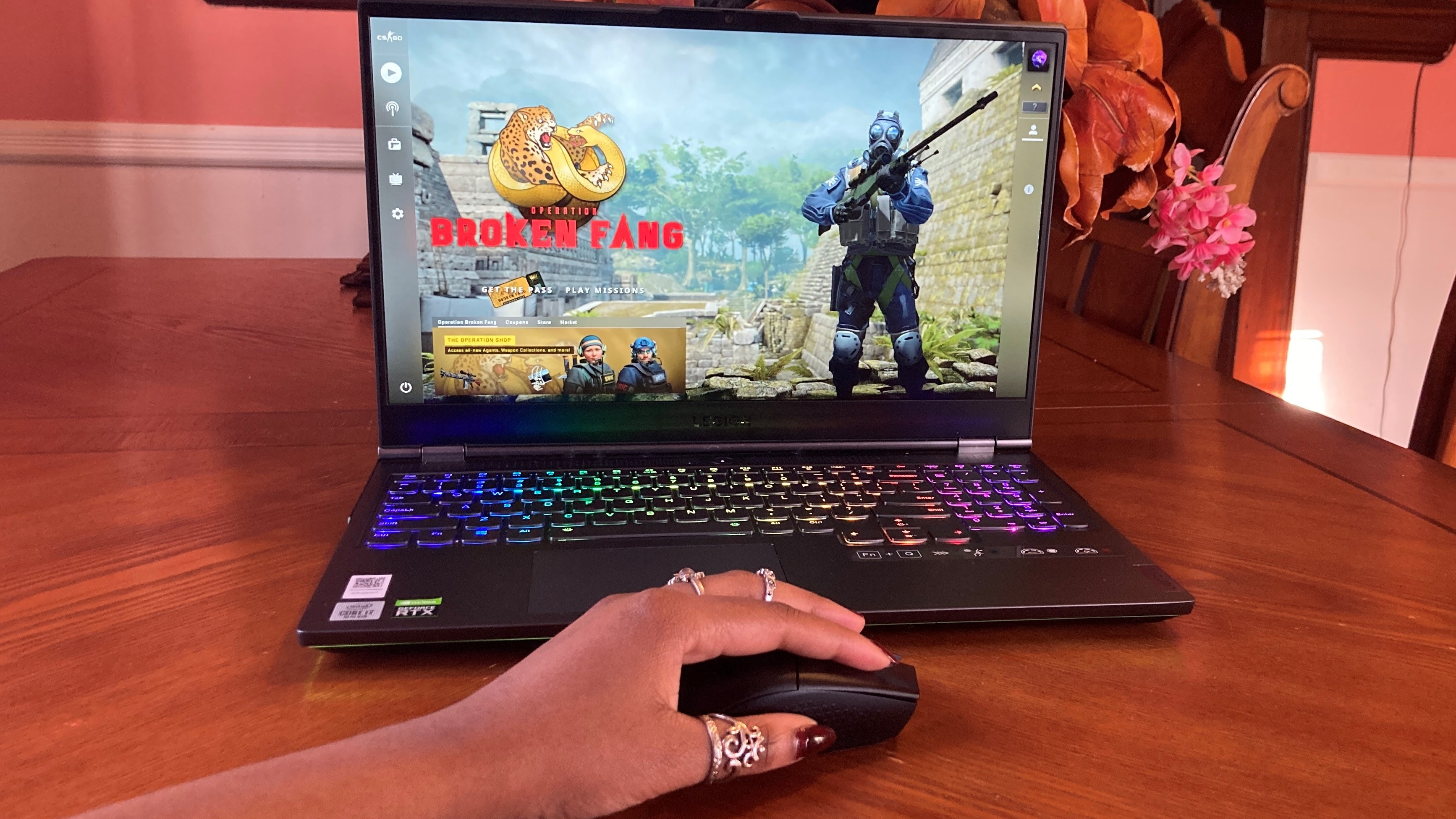
I experimented with the Katar Pro Wireless mouse on various surfaces, including a neoprene mousepad, a wooden dining table, a cardboard box and my cotton leggings — the all-black rodent glided through all surfaces and textures like a professional figure skater.
Bottom line
The Corsair Katar Pro Wireless Gaming Mouse is for first-person shooter and multiplayer-online battle-arena gamers who need a refined rodent that can double as an office peripheral. This Corsair gaming mouse has a low-key, all-black design, allowing it to camouflage as a snazzy work mouse.
However, the Katar Pro Wireless Gaming Mouse has some minor post-travel on all four buttons. Some may also be turned off by needing to replace the battery every two weeks. The $48.99 Logitech G305 Lightspeed is a rival that is similar to the Corsair Katar Pro Wireless — it reportedly offers 250 hours of battery life, comes in four colors (i.e. purple, black, blue and white) and features high sensitivity levels (12,000 DPI vs. 10,000). The only downside of the G305 is that it does not offer Bluetooth support.
If you want to keep it within the Corsair family, another excellent option is the Corsair Harpoon RGB Wireless mouse, which offers connectivity via Slipstream and Bluetooth, and it charges over USB. I also love that it has an inward groove for resting your thumb and finger. It’s only $10 more at $49.99.
If you refuse to spend more than $40 on a gaming mouse, the Corsair Katar Pro Wireless is still a decent choice, offering easy-as-pie configuration options and seamless mode switching.
Kimberly Gedeon, holding a Master's degree in International Journalism, launched her career as a journalist for MadameNoire's business beat in 2013. She loved translating stuffy stories about the economy, personal finance and investing into digestible, easy-to-understand, entertaining stories for young women of color. During her time on the business beat, she discovered her passion for tech as she dove into articles about tech entrepreneurship, the Consumer Electronics Show (CES) and the latest tablets. After eight years of freelancing, dabbling in a myriad of beats, she's finally found a home at Laptop Mag that accepts her as the crypto-addicted, virtual reality-loving, investing-focused, tech-fascinated nerd she is. Woot!
